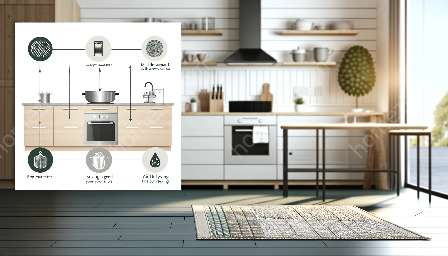Cleaning your kitchen garbage disposal is essential for maintaining a hygienic and clean kitchen environment. Neglecting to clean the disposal can lead to unpleasant odors, clogs, and bacterial growth. In this comprehensive guide, you'll learn effective techniques for cleaning your garbage disposal and keeping it in top condition.
Why Cleaning Your Garbage Disposal is Important
A kitchen garbage disposal is a valuable appliance that helps with food waste management. Over time, food particles, grease, and other debris can build up inside the disposal, leading to foul odors and potential blockages. Regular cleaning is crucial to prevent these issues and maintain a fresh and functional kitchen.
Initial Precautions
Before you begin cleaning your garbage disposal, it's essential to take some initial precautions to ensure safety and effectiveness. Start by turning off the power to the disposal at the circuit breaker to prevent any accidental activation during the cleaning process. Additionally, use a flashlight to inspect the inside of the disposal for any foreign objects or visible blockages.
Simple Cleaning Methods
There are several simple and effective methods for cleaning your kitchen garbage disposal. One popular approach is to use a combination of ice cubes and rock salt. The ice helps to dislodge debris, while the salt acts as a natural abrasive. Simply fill your disposal with a handful of ice cubes and a liberal amount of rock salt, then run cold water and turn on the disposal for a few seconds to break up the debris.
Another method involves using citrus peels, such as lemons or oranges, to freshen and clean the disposal. The natural oils in the peels help to eliminate odors, while the citrus fruit acts as a natural cleaning agent. Simply toss a few citrus peels into the disposal, run cold water, and turn on the unit to freshen the interior.
Deep Cleaning Techniques
For a more thorough cleaning of your garbage disposal, consider using baking soda and vinegar. Start by pouring half a cup of baking soda down the drain, followed by a cup of white vinegar. The resulting chemical reaction helps to break down and loosen any accumulated debris and grease. After allowing the mixture to sit for a few minutes, flush the disposal with hot water to wash away the residue.
Additionally, using a specialized disposal cleaning brush can help to reach and scrub hard-to-reach areas inside the unit. These brushes are designed to dislodge stubborn buildup and provide a deep cleaning that regular methods may not be able to achieve.
Preventative Maintenance
In addition to regular cleaning, adopting preventative maintenance practices can help extend the lifespan of your garbage disposal. Avoid dumping large chunks of food waste or non-food items into the disposal to prevent clogs and damage. Running cold water while the disposal is in use can help solidify grease and flush it away, reducing the likelihood of buildup.
Furthermore, periodically grinding ice cubes and small pieces of citrus peels in the disposal can help maintain its sharpness and freshness. This simple maintenance task can also help eliminate minor odors that may develop over time.
Cleaning Frequency
The frequency of cleaning your kitchen garbage disposal depends on your usage and the types of food waste that go through the unit. As a general guideline, aim to clean the disposal at least once a week to prevent unpleasant odors and maintain optimal functionality.
Conclusion
Keeping your kitchen garbage disposal clean is an essential aspect of kitchen maintenance. By following the techniques and tips outlined in this guide, you can ensure that your disposal remains free of odors, blockages, and bacterial growth, creating a hygienic and pleasant kitchen environment for you and your family.
When it comes to kitchen maintenance, a clean garbage disposal is one key component of a healthy and comfortable cooking space.


















































